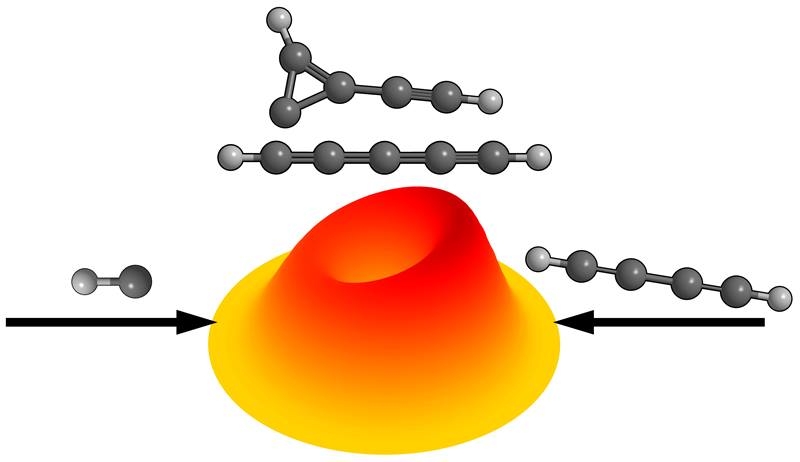The Science
Carbenes are very reactive molecules that contain a carbon atom with two unshared electrons. Carbenes take two forms—called singlets and triplets—depending on their electrons’ spin. Scientists researching carbenes try to understand the step-by-step gas phase chemical reactions that lead to specific types of carbenes with specific forms. In this research, scientists studied carbenes under single collision conditions—before the molecules can react. To do so, they collided beams of two different molecules, methylidyne and diacetylene. The researchers combined the crossed molecular beam data with electronic structure calculations and quasi classical trajectory simulations to reveal chemical reactions step by step. These studies help researchers understand important chemical processes of highly reactive products from hydrocarbons such as gas and oil.
The Impact
Carbenes represent key reactive intermediates. These are molecules that are highly reactive and that convert quickly to more stable molecules. They are important building blocks for molecules in interstellar space and in combustion systems. However, carbenes have short lifetimes and tend to react with each other. These factors make them difficult to study, and scientists do not fully understand the role of carbenes as reactive intermediates for molecules that are in the gas phase (and not solids or liquids). In this research, scientists merged experimental and theoretical investigations to unravel how exotic carbenes behave before they collide with other molecules. These mechanisms are important to our understanding of the processes leading to short-lived molecules in extreme environments. For example, they help scientists understand the formation of soot in industry and engines.
Summary
Our combined crossed molecular beam data with electronic structure calculations and quasi classical trajectory simulations provided compelling evidence on the formation of singlet ethynylcyclopropenylidene (c-C5H2) and triplet pentadiynylidene carbene (HCCCCCH) under single collision conditions via the elementary reaction of a methylidyne radical with diacetylene in the gas phase involving indirect scattering dynamics. Our studies revealed that the reaction has no entrance barrier, all barriers involved in the formation of (c-C5H2) and pentadiynylidene (HCCCCCH) are well below the energy of the separated reactants, and the overall reactions to prepare both isomers are exoergic. The agreement between experimental chemical dynamics studies under single collision conditions and the outcome of trajectory simulations discloses that molecular beams studies merged with dynamics simulations have advanced to such a level that polyatomic reactions with relevance to extreme astrochemical and combustion chemistry conditions can be elucidated at the molecular level and expanded to higher-order homologues carbenes such as (c-C7H2) and triplet heptatriynylidene (HCCCCCCCH) thus offering a versatile strategy to explore the exotic chemistry to novel higher-order carbenes in the gas phase.
Funding
This work was supported by Department of Energy Office of Science, Office of Basic Energy Sciences program grants to the University of Hawaii and Florida International University.
